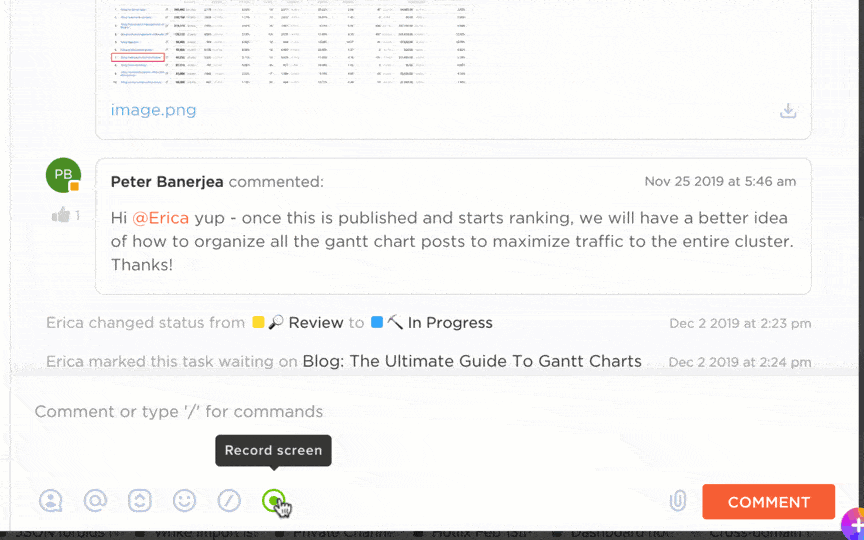How to Apply VARK Learning Styles for Better Learning

Sorry, there were no results found for “”
Sorry, there were no results found for “”
Sorry, there were no results found for “”
Learning is a personal journey, and everyone absorbs information differently.
Some thrive with visuals, while others respond better to hands-on activities or clear verbal guidance.
So, what’s the key to unlocking better results? It starts with understanding your unique and preferred learning style.
That’s where the VARK system steps in. 📖
This simple yet transformative framework breaks learning into four learning styles: Visual, Auditory, Reading/Writing, and Kinesthetic.
Whether you’re an educator or student, blending these individual learning styles with innovative tools transforms how you work and learn. Discover your learning style and create personalized strategies that drive engagement and retention.
In 1987, Neil Fleming developed the VARK model, a cornerstone for identifying learning preferences. It focuses on four sensory modalities—Visual, Auditory, Reading/Writing, and Kinesthetic—to help you understand how people process and memorize information.
What makes VARK unique is its versatility. These multiple learning styles extend beyond academics, influencing how we interact, behave, connect with others, and make everyday decisions.
Ready to discover which specific learning style resonates with you? Let’s take a quick look and see where you fit:
| Learning Style | Learns Best Through | Strength | Weakness |
| Visual Learners | Seeing and observing | Strong visual memory | Difficulty with verbal instructions |
| Auditory Learners | Hearing and listening | Good memory for spoken information | Gets distracted by background noise |
| Reading/Writing Learners | Reading textbooks and writing notes | Strong literacy skills | Struggles with visual/auditory learning or hands-on tasks |
| Kinesthetic Learners | Physical and hands-on activities | Excel at building and experimenting | Difficulty sitting still for long periods |
Research shows that 65% of people are visual learners. For them, any content sticks when they can ‘see’ it—whether through diagrams, charts, or graphic displays. Information presented in visual formats helps them make sense of new ideas and connect the dots.
Here’s how visual learners best process information:
For instance, a biology student might use diagrams and color-coded charts to visualize the stages of cell division. This tactic will help them understand and remember each phase for exams.
Similarly, in a marketing role, a visual learner might use ideation techniques like mind mapping to brainstorm a social media strategy. By visually organizing themes and content ideas, they can see how each component fits into the larger plan, ensuring alignment across all channels.
Auditory or aural learners thrive when they can ‘hear’ information. Whether it’s a lecture, podcast, or group discussion, they digest ideas by listening and talking them through. They prefer spoken explanations, and repeating things aloud helps cement their understanding.
Think you’re an auditory learner? Check if you can do the following:
For instance, aural learners working in sales might refine their pitch by creating presentations and participating in role-playing scenarios with peers.
Similarly, a history student might prefer listening to recorded lectures or audiobooks. It allows them to reinforce critical events and concepts in a way that sticks, even on the go.
For reading and writing learners, the written text is their most potent ally! They are good at taking up information from books, articles, or notes and strengthen their learning by writing. Lists, detailed notes, and summaries help them organize their thoughts and understand what they’ve learned.
If reading and writing are your strengths, here’s how to approach this learning style:
For instance, a reading/writing learner working as a researcher might spend hours analyzing data and drafting detailed reports. Writing down observations and organizing them into structured summaries helps them synthesize complex information.
Similarly, literature students may excel at reading novels, taking comprehensive chapter notes, and writing detailed essays to showcase their understanding of themes and characters.
Kinesthetic learners learn best by doing, whether through hands-on experiments or role-playing. Movement, touch, real-world context, and direct interaction are essential for these types of learners.
Here’s how a kinesthetic learner brings ideas to life:
For instance, a kinesthetic learner in a mechanical engineering role might thrive by working with physical prototypes or running tests to refine designs. Their learning comes alive through active problem-solving and direct interaction with materials.
Similarly, chemistry students learn concepts better by conducting lab experiments. It helps them connect abstract ideas with practice, offering an experience that textbooks or lectures alone can’t provide.
🌈 Remember: Many individuals don’t adhere to one particular learning style theory—they embrace multiple modalities. This flexibility helps multimodal learners grasp intricate ideas and retain information, leading to more agile learning.
For example, they might watch a video (visual), listen to a podcast (auditory), take notes (reading/writing), and finish by practicing hands-on (kinesthetic) to master a concept.
Now that you know the different learning styles, let’s explore why the VARK system matters.
It’s not about knowing how you learn—it’s about using that wisdom to improve how you teach, study, and actively engage with content.
VARK is your roadmap to smarter learning, faster retention, and better results, be it in the classroom, the boardroom, or anywhere in between.
Here’s how the VARK model transforms your studying or teaching methods:
Let’s explore an eye-opening case study involving third-year Bachelor of Secondary Education (BSEd) English students.
This research aimed to determine the learning style preferences of these higher education students using the VARK model. It also assessed how well teachers adapted their teaching methods to cater to these sensory modalities.
The VARK questionnaire showed that out of 13 students, 3 preferred Aural learning, 3 leaned toward Kinesthetic learning, and the rest preferred a mix of styles (Multimodal learning).
The results? A game-changer:
Unlocking a personalized, practical learning experience starts with understanding your preferences. Whether you’re a student refining study habits or an educator customizing lessons, this approach makes learning more engaging and efficient.
Pairing VARK with AI-powered tools like ClickUp makes the results even more impactful.
Ready to discover what works best for you? Let’s explore a step-by-step guide to finding and applying your learning style:
The first step is self-assessment. Think about past learning experiences—when have you felt most engaged and successful?
To gain more clarity, consider taking a VARK learning styles questionnaire. This quick test offers valuable insights into your learning preference, helping you adapt your study habits for optimal results.
For educators, this assessment is groundbreaking. It reveals how all students learn and grasp information, allowing you to adjust lessons to meet their needs. But, manually collecting this information takes time and effort.
Here’s where ClickUp Forms steps in! These digital forms automate collecting, tracking, and analyzing results. No more paper surveys or manual data entry. Everything is streamlined to save you time and ensure accurate details.

💡 Pro Tip: ClickUp Forms go beyond the classroom. Use them across industries to streamline employee training and identify communication preferences for new hires. For more insights, check out this Educator’s Guide to ClickUp Forms.

Once you’ve identified your learning style, the next step is to set actionable goals that align with your strengths. Whether you’re a student or an educator, defining goals transforms the learning or teaching process into a structured journey.
Use ClickUp Goals to set specific, measurable objectives. It provides a clear, visual way to track your milestones, ensuring every step is purposeful.
Additionally, educators can use ClickUp’s Learning and Development Project Template to streamline things further.
This template is perfect for structuring both in-person and eLearning settings. It offers a robust framework for educational planning, allowing you to set clear objectives, monitor progress, and manage student learning styles.
Here’s why you’ll love this template:
Once you know your learning style, it’s time to implement it with the right study tools. That’s where ClickUp truly shines.
With its robust features and library of pre-built templates, students, educators, or trainers can transform their journey. Here’s how ClickUp caters to each learning style:

Instead of sticking to traditional, linear notes, why not turn your ideas into a vibrant diagram? The mapping note-taking method can be a game-changer for visual learners.
Take it to the next level with ClickUp Whiteboards, which turn abstract ideas into clear, visual roadmaps. Whether mapping out assignments or organizing study materials, the clean, color-coded layout gives you a bird’s-eye view, keeping you organized and focused.

If hearing is how you learn best, you’ll love ClickUp Clips. Use it to record online lectures, group discussions, or even voice memos and replay them to reinforce critical concepts. Listening back helps you remember what you’ve learned, keeping it fresh in your mind.
To make things even more efficient, ClickUp Brain, an AI-powered tool, automatically transcribes these recordings into detailed notes. It ensures you don’t miss crucial details and saves you the trouble of manual note-taking.
Hands-on learners tend to thrive on action, and ClickUp’s Task Management Tools are perfect for this learning style. Assign tasks that involve experiments, activities, or interactive projects, keeping the learner active and engaged.

ClickUp Docs can be the ideal companion for reading/writing learners! It allows you to create comprehensive notes, write summaries, organize content, and collaborate on interactive documents in real time.
Educators can review students’ work, leave instant feedback via ClickUp’s Assigned Comments, and track progress.

A structured learning environment is critical to success. ClickUp’s Learning Management System (LMS) Implementation Template ensures educators and learners have a clear, organized path to follow.
It’s a complete solution for managing educational processes with precision, designed to streamline in-person and online settings. Here’s how it helps:
Read More: 5 Ways ClickUp Can Help Navigate Memory Loss
Learning is dynamic, and regular review is crucial in refining your approach. ClickUp’s tools help you track progress, spot gaps, and adjust strategies for better results. Here’s how:
These tips will help you stay adaptable, refine your learning strategies, and ensure long-term success.
Read More: 16 Best Digital Whiteboard Software Programs
While VARK is a powerful tool, understanding its limits is essential for a more balanced approach. This will help you make more informed decisions when using it.
Here are some common challenges:
Recognizing these limitations allows educators and learners to use VARK as a valuable tool. But, it should be considered as a part of a broader educational approach that includes multiple strategies.
Adapting VARK to different settings is a game-changer. It ensures everyone stays engaged, no matter how they learn. Here’s how you can make it work in any environment:
By tailoring your approach with VARK, you create a more inclusive, engaging, and effective learning experience.
💡 Pro Tip: Try gamification in education! It introduces learning concepts through games, using multimodal styles to boost engagement and make any activity fun, interactive, and competitive.
Ready to make your study sessions more effective? Here are some practical tips that align with the VARK model to help you absorb information based on your learning style.
✅ Visual learners: Create mind maps or flowcharts to organize ideas and visualize connections between topics. Color-code your notes for quick recall
✅ Auditory learners: Record your study notes or listen to educational podcasts. Replaying lectures or discussions can help reinforce key concepts
✅ Reading/Writing learners: Rewrite your notes in your own words or create summaries after each study session. Lists, flashcards, and outlines will boost retention
✅ Kinesthetic learners: Become hands-on! Use models, experiments, or real-world examples to make conceptual ideas more tangible
✅ Mix it up: Try combining two or more learning styles to strengthen your understanding. Use quizzes and flashcards to challenge your memory
✅ Take frequent breaks: Regular breaks keep your brain fresh—especially for learners with kinesthetic preferences
✅ Engage with peers: Join study groups to discuss the material and hear others’ perspectives— an effective strategy for auditory learners
VARK is the key to creating a personalized and practical learning experience. Whether you’re a student aiming to enhance your study habits or an educator designing more inclusive lessons, understanding your learning style and individual differences leads to better results.
Consider ClickUp’s powerful tools—visual Whiteboards, Task checklists, and collaborative Docs—and integrate VARK learning styles into any environment easily. Say goodbye to one-size-fits-all approaches and embrace more innovative, tailored learning strategies. Ready to revolutionize how you learn and teach?
Start using ClickUp today and experience the transformation for yourself!
© 2026 ClickUp